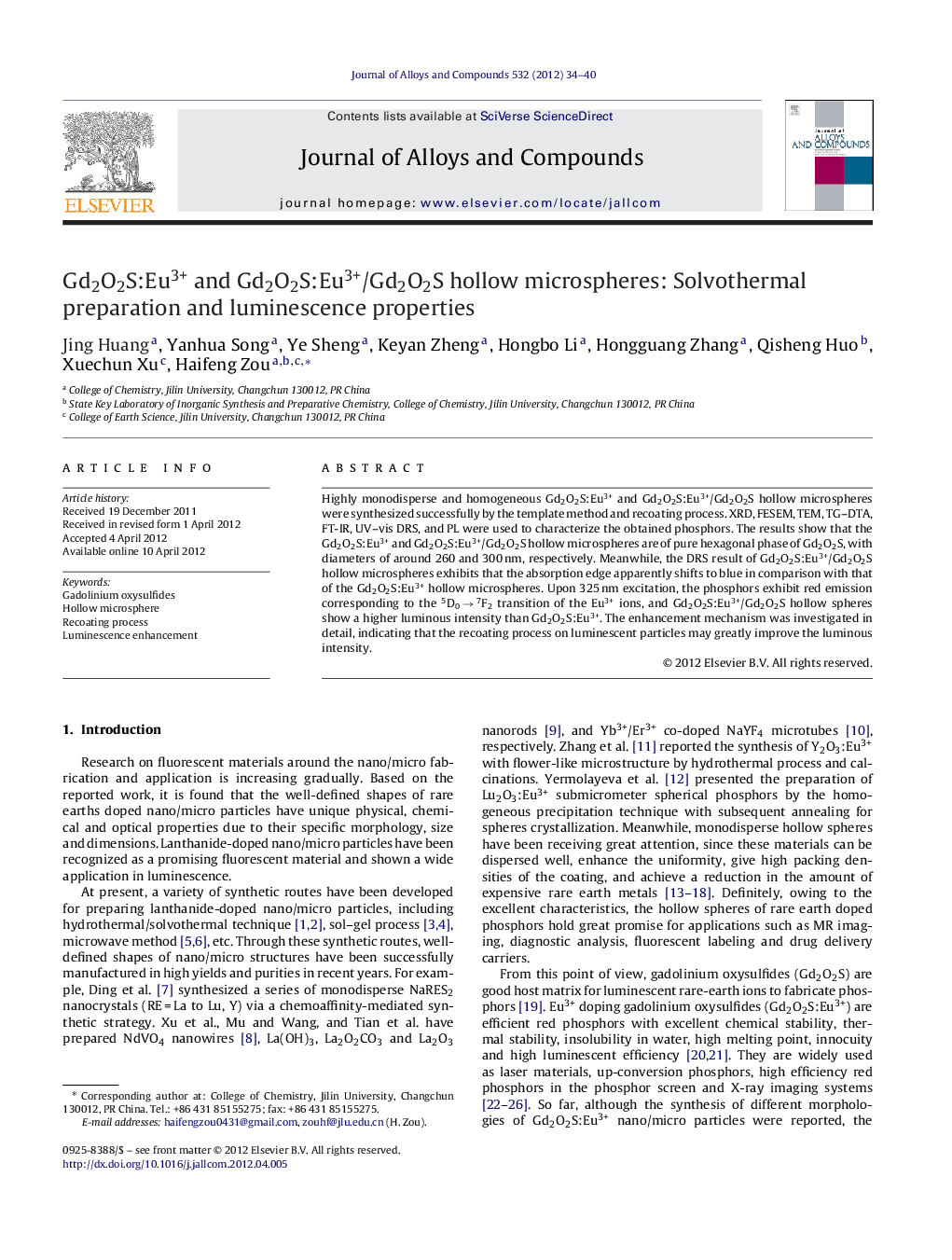| Article ID | Journal | Published Year | Pages | File Type |
|---|---|---|---|---|
| 1615970 | Journal of Alloys and Compounds | 2012 | 7 Pages |
Highly monodisperse and homogeneous Gd2O2S:Eu3+ and Gd2O2S:Eu3+/Gd2O2S hollow microspheres were synthesized successfully by the template method and recoating process. XRD, FESEM, TEM, TG–DTA, FT-IR, UV–vis DRS, and PL were used to characterize the obtained phosphors. The results show that the Gd2O2S:Eu3+ and Gd2O2S:Eu3+/Gd2O2S hollow microspheres are of pure hexagonal phase of Gd2O2S, with diameters of around 260 and 300 nm, respectively. Meanwhile, the DRS result of Gd2O2S:Eu3+/Gd2O2S hollow microspheres exhibits that the absorption edge apparently shifts to blue in comparison with that of the Gd2O2S:Eu3+ hollow microspheres. Upon 325 nm excitation, the phosphors exhibit red emission corresponding to the 5D0 → 7F2 transition of the Eu3+ ions, and Gd2O2S:Eu3+/Gd2O2S hollow spheres show a higher luminous intensity than Gd2O2S:Eu3+. The enhancement mechanism was investigated in detail, indicating that the recoating process on luminescent particles may greatly improve the luminous intensity.
Graphical abstractFigure optionsDownload full-size imageDownload as PowerPoint slideHighlights► Highly monodisperse and homogeneous Gd2O2S:Eu3+ and Gd2O2S:Eu3+/Gd2O2S hollow microspheres were prepared successfully via a mild solvothermal method. ► The obtained hollow microspheres exhibit excellent red-luminescent properties. ► The recoating process can greatly improve the luminous intensity.
